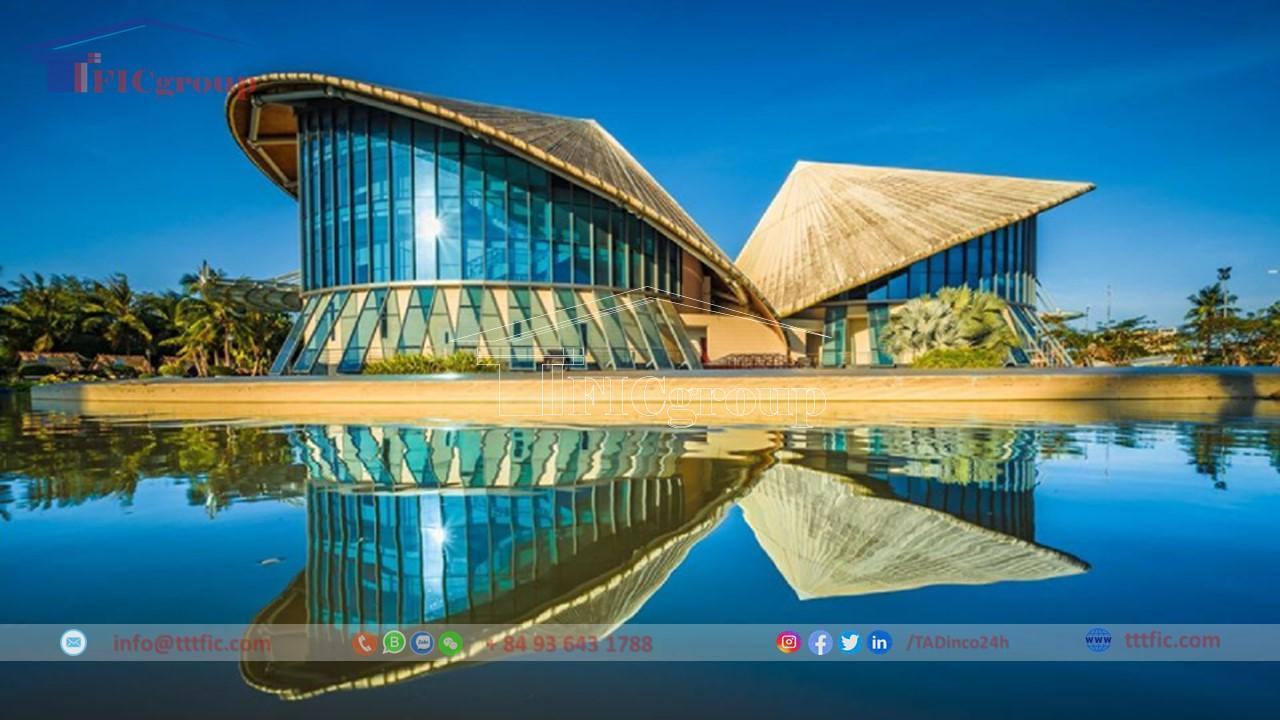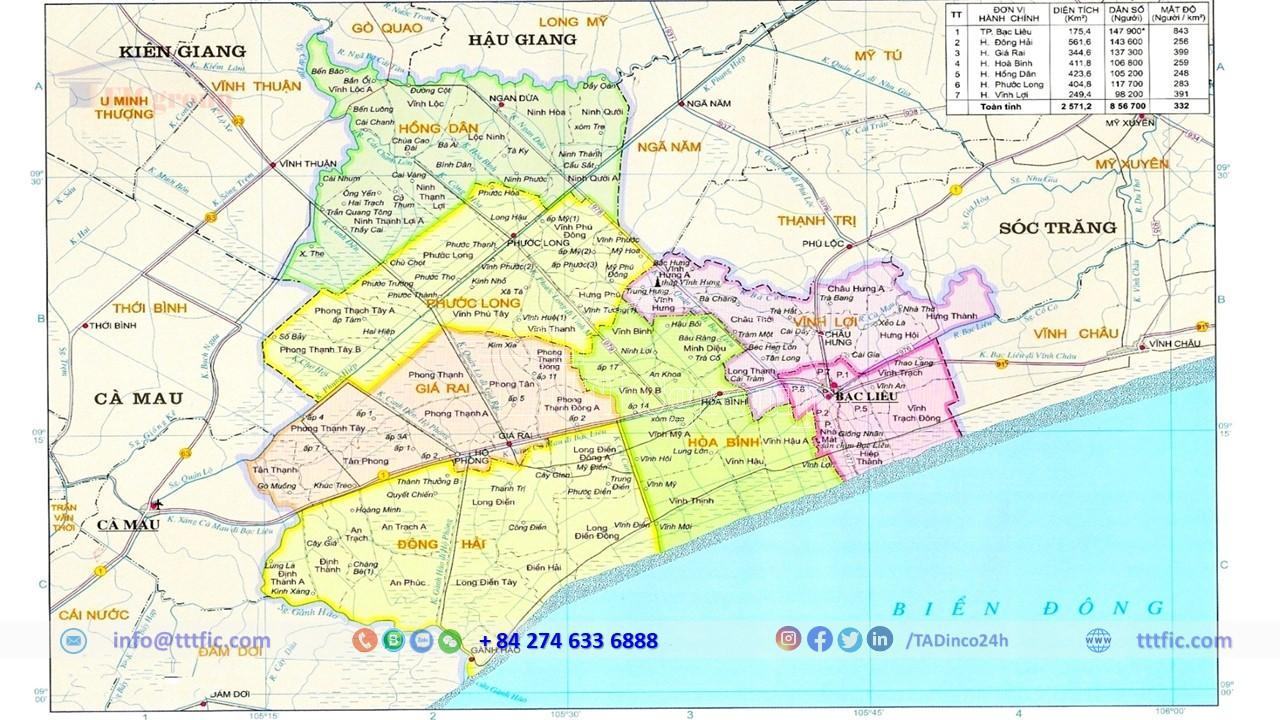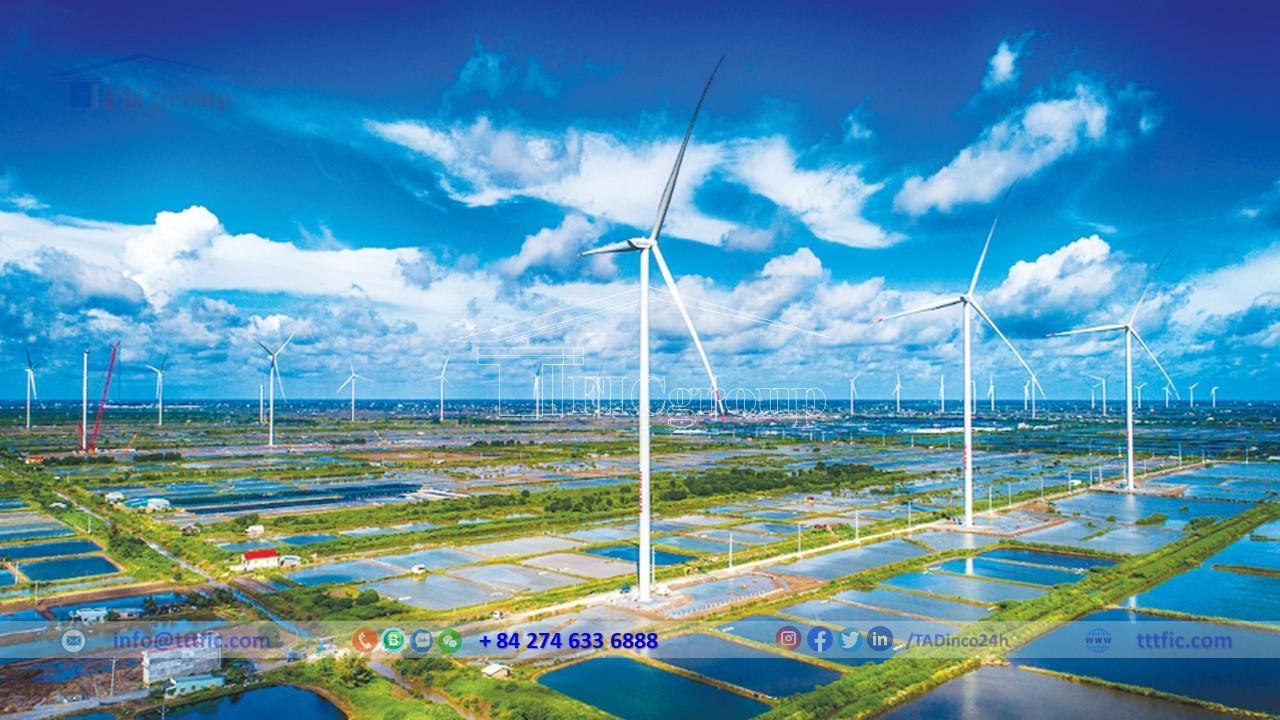Bac Lieu province, a province situated on the Ca Mau Peninsula of Vietnam in the Mekong Delta region, was first established in 1899. Over the years, various changes have occurred in the province, including its dissolution and merger with other provinces on several occasions, until its eventual re-establishment in 1997.
As for the economy, Bac Lieu held the 46th position in terms of population and the 48th in Gross Regional Domestic Product (GRDP) among Vietnam’s administrative units in 2018. The province housed a population of 892,930 people, and achieved a GRDP of 37,719 billion Dong, with a GRDP growth rate of 8.36%.
Several ethnic groups, such as the Chinese, Vietnamese, Khmer, and Cham, consider Bac Lieu their home. The province is famous for the liberal style of its Southern people, with connections to notable figures and cultural traditions like the Bac Lieu Dandy and the musician Cao Van Lau. Besides, the province continues to be known for its salt production, an industry that had previously prospered and still persists in the West.
Bạc Liêu, a province located on the Ca Mau Peninsula in the Mekong Delta region, occupies nearly 0.8% of Vietnam’s land area, making it the 7th largest province in the region. Bordered by Hau Giang to the north, Soc Trang to the east and northeast, Ca Mau to the southwest, Kien Giang to the northwest, and the East Sea to the southeast with a coastline of 56 km, Bạc Liêu spans a natural area of 2,669 km².
Geographically, Bạc Liêu’s northernmost point is in Vinh Loc A, Hong Dan, and its southernmost point is in Ganh Hao, Dong Hai. The westernmost point lies in Tan Thanh, Gia Rai, and the easternmost in Hung Thanh, Vinh Loi. The province also oversees a maritime area of over 40,000 km², rich in potential and diverse marine resources.
Bạc Liêu sits strategically on the National Highway 1, an essential traffic artery, approximately 110 km from Can Tho city and 280 km north of Ho Chi Minh City. Additional new routes such as Nam Song Hau and Nga Bay to Ca Mau City also pass through the province, facilitating economic and social exchange and development.

Administrative map of Bac Lieu province – TTTFIC Group
Natural condition
Topographic:
Bac Lieu is a flat region, without rough terrain or significant geological disturbances. The average elevation is 0.8-1.5m above sea level, with a slope from northeast to southwest. The area has many depressions and large canals. The continental shelf is broad, the sea is shallow, and the beach gently slopes, expanding by 30m each year. However, the section from Ap Go Cat to Ganh Hao experiences significant erosion, about 10m per year. The province’s topography also changes due to human activities, such as constructing canals, roads, and improving alkalinized land, transforming barren areas into agricultural and aquacultural zones.
Climate:
Bac Lieu, located at a low latitude with a typical equatorial monsoon climate, has a stable average temperature and heavy, uneven rainfall.
1. The average annual temperature is 26-27°C, with May being the hottest month up to 37°C and January the coldest at 20°C. With a long coastline, Bac Lieu has potential for solar power development.
2. The average annual rainfall is 1700 mm, mainly from May to November. Rainfall decreases from west to east and from inland to the sea. Rain often occurs in periods, sometimes causing drought during the rainy season. Especially, thunderstorms are common during the rainy season.
3. Bac Lieu has two wind seasons: the summer wind from April to October bringing rain, and the winter wind from November to April. The summer wind can cause thunderstorms and tornadoes. With a long coastline and strong winds, Bac Lieu has potential for wind power development.
Bac Lieu province’s river system:
Bac Lieu’s river system, mainly man-made channels, is vital for irrigation and farming, especially for flushing salts from the soil. Influenced by the sea, most of these waterways act as tidal conduits. The water levels depend on the tide and rainfall, facilitating aquaculture, salt production, and mangrove forest expansion. However, tidal influence also causes salinization, affecting people’s lives in the south of National Highway 1.
Groundwater is a crucial source for domestic and industrial use, comprising three layers: Pleistocene, Pliocene, and Miocene. Despite its abundance, careful usage and pollution prevention are required.
Bac Lieu’s rivers can be divided into two groups: one flowing into the southern estuary, including the Ganh Hao River, the natural boundary with Ca Mau Province, and the other flowing into the Ba Thac River.
Land:
Bac Lieu’s soil includes:
– Active alkaline soil (38.6%): Predominantly in Hong Dan, Phuoc Long, and Gia Rai. The soil is improved through desalination programs, partly transitioning to a new farming system: rice-shrimp, rice-fish.
– Saline soil (33.6%): Alluvial soil in a saline environment, along the coast and south of National Highway 1. It’s divided into four subgroups: highly saline, moderately saline, slightly saline, and mangrove forest soil.
– Potential alkaline soil (23.1%): Young, saline-contaminated soil with poor drainage, mainly in the west of Dong Hai and northwestern Hong Dan, used for aquaculture and industrial crops like sugarcane, pineapple, melaleuca, eucalyptus, and bamboo.
– Alluvial and other soil (4.5%): Mostly undeveloped, located along the coast of Bac Lieu City and the Hoa Binh, Dong Hai districts, and along the inland channels.
– Aeolian sand soil (0.2%): Along the coast of Vinh Trach Dong, Hiep Thanh, and Vinh Hau, primarily for longan cultivation and vegetable farming.
Bac Lieu’s total natural land area is 258,247 ha, with 38.1% suitable for annual crops and 48.62% for forestry, shrimp farming, and salt production. Most of the land is long-term and stable alluvial soil, suitable for comprehensive agricultural development.
Bac Lieu’s biota includes:
Forest Resources: Covering 1.87% of the natural land, Bac Lieu’s forests are mainly protective, saline-tolerant, high in biodiversity, and valuable for environmental protection. The primary species are mangrove apple, melaleuca, and bruguiera. The undergrowth consists of grass and climbing plants, housing 104 plant species.
Animals: Terrestrial animals are diverse and abundant, with birds as the dominant species. Species such as the adjutant, openbill stork, egret, crow, ibis, and pheasant inhabit mangrove forests or scattered forest patches in residential areas. Reptiles include 12 species like pythons, snakes, monitors, and geckos, some of which are rare and listed in the Vietnam Red Book. However, harmful species like rodents and insects damage crops and livestock.
Aquatic fauna is rich, with numerous saltwater fish species like red snapper, mackerel, and pufferfish. Freshwater resources include 14 fish species, primarily snakehead fish, gourami, tilapia, and shrimp. Brackish water species include mudskipper, shrimp, crab, and shellfish.
Sea:
Marine fauna in Bac Lieu includes 661 fish species from 138 families, many of which are high-value species like shrimp, red snapper, goby, sardine, mackerel, and pufferfish. The region is home to 33 different shrimp species, with an annual catch potential of over 10,000 tons. The fish stocks amount to over 100,000 tons per year, enabling direct import and export. Bac Lieu’s coastline, spanning 56 km, hosts a variety of shrimp, fish, snails, and blood clams. The annual seafood harvest is nearly 100,000 tons, including close to 10,000 tons of shrimp.
Economy:
Bac Lieu province aims to boost its economy based on five pillars: high-tech agriculture, renewable energy (including wind, solar, and gas power), tourism development, high-quality commercial services, education, healthcare, and maritime economy tied with national defense and security.
The 2020 economic situation saw a 4.08% increase in gross regional domestic product (GRDP) compared to 2019. The state budget revenue was approximately VND 11.150,65 trillion, decreasing by 1.58% compared to the same period, while the expenditure was about VND 10.882,34 trillion, an increase of 18.08%. The province’s total social investment capital reached VND 27.542,31 trillion, up 17.83% from 2019.
The consumer price index (CPI) in 2020 rose 6.12% compared to 2019, with the gold price index and the US dollar price index increasing by 26.55% and 0.16% respectively.
Regarding businesses, Bac Lieu had 1,858 operating enterprises by the end of 2019, up 20.1% from 2018, and the total workforce within enterprises was 34,132 people, a 7.68% increase from 2018.
Economic situation in Bac Lieu Province in 2020:
In agriculture, forestry, and fisheries, the grain yield in 2020 was 1.172,18 thousand tons, up 2.05% from the same period. The seafood output reached 380,75 thousand tons, up 5.74% compared to 2019. The province also continues to implement the project of restructuring the seafood sector towards sustainable development, aiming to make Bac Lieu a leading shrimp industry center in Vietnam.
Regarding industry, the industrial production index increased by 4.11% compared to 2019. The mining industry, processing and manufacturing industry, and the water supply, waste management industry all saw growth. Major industrial products of the province, such as frozen seafood, iodized salt, commercial electricity, commercial water, and beer, all experienced growth compared to 2019.
In terms of trade and services, the total retail sales of goods and consumer service revenue increased by 3.69%. Tourism revenue increased by 87.05%. The number of overnight tourists, day visitors, and guests served by accommodation establishments all remained stable compared to the same period last year.
Transportation also saw growth, with passenger transport volume increasing by 4.67%, and freight transport increasing by 5.44% compared to 2019.
In general, Bac Lieu had good development in 2020, with growth in the industrial, commercial, service and transportation sectors.

Wind power project in Bac Lieu province – TTTFIC Group
Social:
Education
The education system in Bac Lieu province includes preschool, primary, secondary, and vocational education. As of September 30, 2007, Bac Lieu had 234 schools, the lowest number in the Mekong Delta region. The province has:
- 64 preschools
- 154 primary schools
- 67 lower secondary schools
- 85 upper secondary schools
- 3 colleges (Bac Lieu Medical College, Bac Lieu Vocational College, Bac Lieu Economic and Technical College)
- 1 university (Bac Lieu University)
The targets for universal education and lower secondary education have been met and exceeded: 96.93% of students graduate from lower secondary school; 81.35% of individuals aged 15-18 have completed lower secondary education; 99.10% of 6-year-old children enroll in first grade; and 90.79% of children aged 11-14 graduate from primary school. 31 out of 61 communes meet the standard for universal primary education.
Healthcare
Thanh Vu Media Hospital: Ward 3, Bac Lieu City
Thanh Vu Media Hospital: National Highway 1, Ward 7, Bac Lieu City
Health centers in Bac Lieu City, Gia Rai Town, and the districts of Dong Hai, Hoa Binh, Hong Dan, Phuoc Long, Vinh Loi, as well as health centers in communes, wards, and towns.
Population
The population of Bac Lieu province, according to the November 1, 2021 census, is 918,207 people. Of this, the urban population is 255,248 people (27.80%), and the rural population is 662,959 people (72.20%).
The average population in 2020 was 913,481, an increase of 5,240 people or 0.58% compared to 2019. The urban population accounted for 27.76% (253,644 people), while the rural population accounted for 72.23% (659,837 people). The male population was 457,072 (50.04%), and the female population was 456,409 (49.96%).
According to the April 1, 2019 population survey, Bac Lieu had a population of 907,236 people with a population density of 335 people per square kilometer. The urban population accounted for about 27.74% of the total population, with 251,676 people, while the rural population accounted for 72.26% with 655,560 people. The male population was 453,972, and the female population was 453,264. The urbanization rate reached 28% by 2022.
Bac Lieu is home to three main ethnic groups: Kinh, Hoa, and Khmer. The blending of cultures among these groups has created a distinct cultural identity for Bac Lieu, ranging from culinary culture to daily lifestyles and communication.
Relegion:
As of April 1, 2019, the province had 10 different religions with a total of 157,029 followers. The largest religious group was Buddhism with 131,226 followers, followed by Catholicism with 19,206 followers, Caodaism with 5,550 followers, Protestantism with 618 followers, and Tinh do Cu Si Buddhist Society with 354 followers. Other religions include Hoa Hao Buddhism with 39 followers, Minh Su Dao with 15 followers, Islam with 14 followers, Baha’i with 5 followers, and Buu Son Ky Huong with 2 followers.



